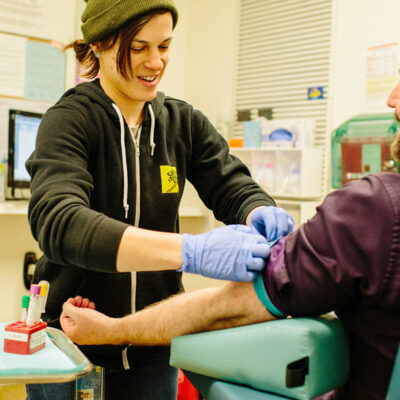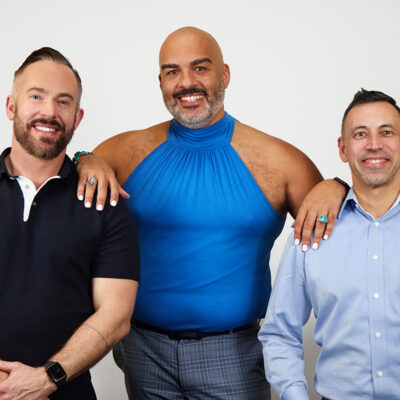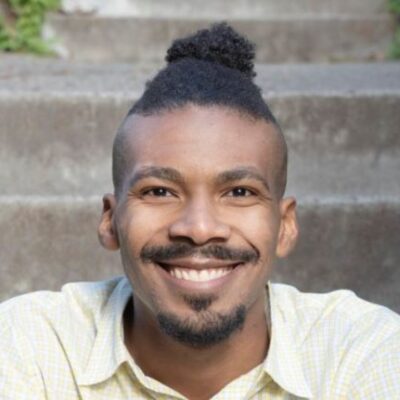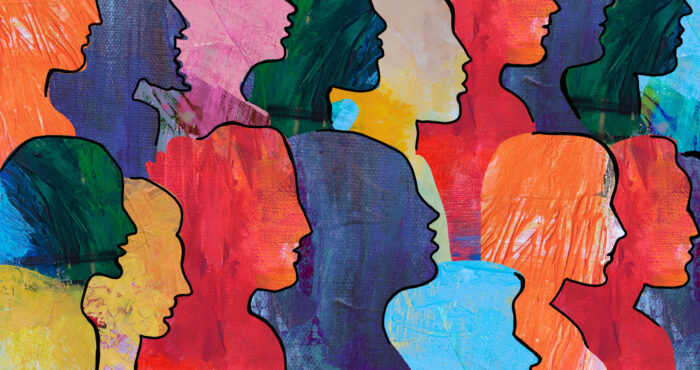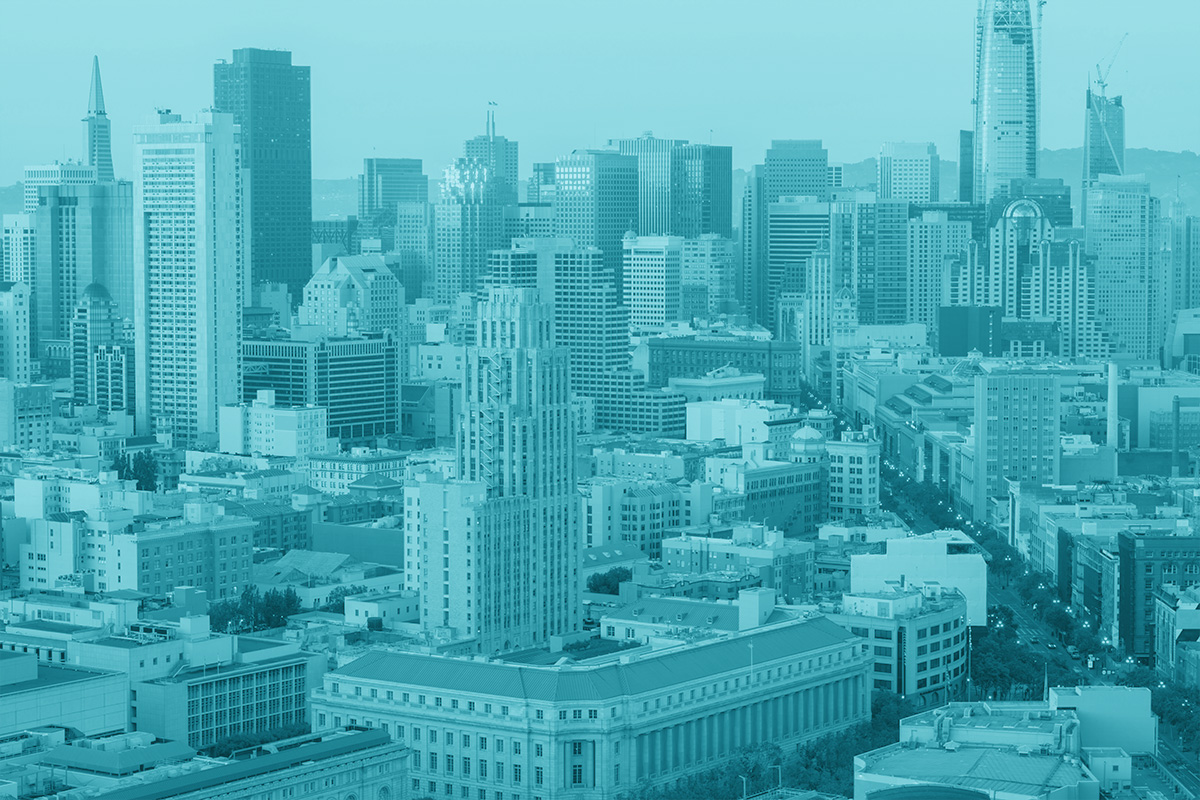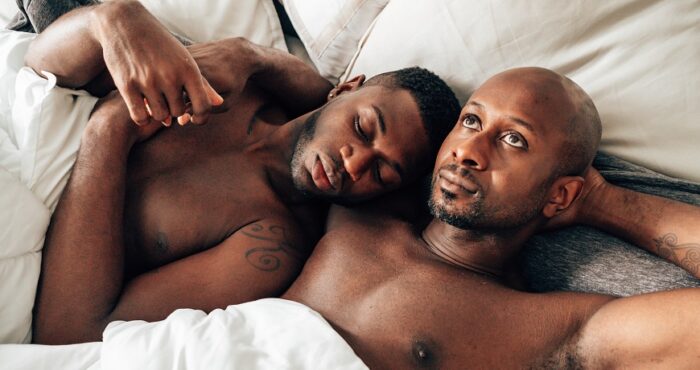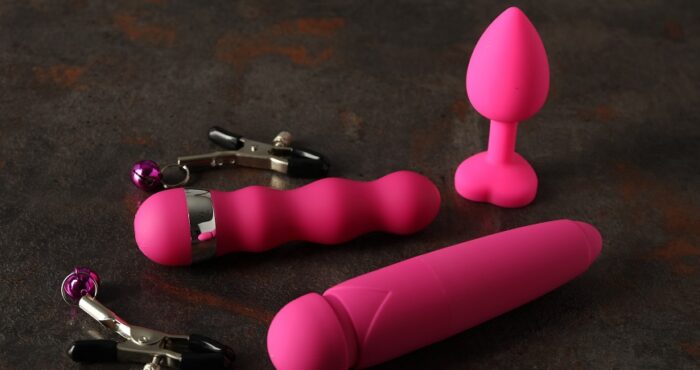Queer, deaf, and ready to perform
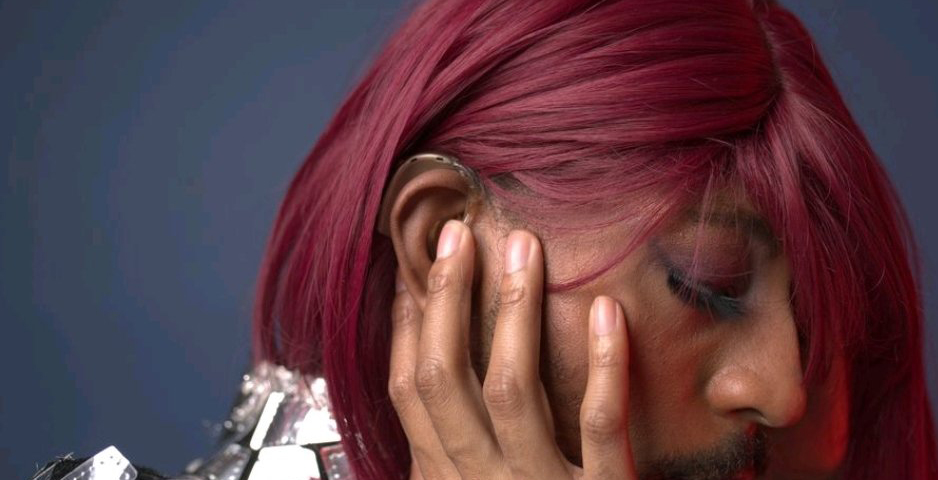
San Francisco, a city with a fascinating history of banning drag performances once-upon-a-time, only to later embrace them by appointing the nation’s first drag laureate, is yet again poised to revolutionize the art form. Something entirely new is on the horizon, ready to smash through barriers and take drag culture in San Francisco to unprecedented heights.
Meet Kevin Abrams, aka Iman., the driving force behind the Deaf Drag Empowerment Residency & Showcase (DDERS). As one of the only Deaf drag queens in the traditional drag scene in the Bay Area, Kevin was inspired to create a space where Deaf culture and drag could come together. “I rarely see the Deaf community represented,” Kevin shares. “A lot of times, spaces think of us as an afterthought.” The DDERS program aims to change that, providing a platform for Deaf and Hard of Hearing artists to learn, grow, and shine.
Starting in February 2025 just a few doors down from San Francisco AIDS Foundation’s Strut location on Castro Street, the DDERS program will offer a free, six-week residency at Queer Arts Featured, culminating in a public showcase in early April. The program is open to Deaf and/or Queer individuals who are interested in exploring the art of drag. Participants will have the opportunity to learn from a diverse range of professional artists, with workshops covering everything from Deaf culture and history to drag character development, makeup, costuming, and stage performance. Each class will be ASL accessible, ensuring that all participants can fully engage with the material.
Kevin will be leading the program alongside Casey Trujillo, the lead artist at Queer Arts Featured. Their goal is to create a space where both the Deaf and drag communities can learn from each other.
“This is for people who are curious about drag too,” Kevin explains. “We want to have both sides educate each other on their culture.” The program’s focus on accessibility is at the forefront of its design.
It can’t be understated how the venue for the performances, Queer Arts Featured, or Queer AF for short, fully represents the mission of DDERS. Described as “the Castro’s living room,” Queer AF was first the storied home of Harvey Milk’s print shop. Today the ethos of Harvey Milk continues to spill out into the street from its often propt-open door, celebrating the neighborhood’s rich history of LGBTQ+ activism and inclusivity.
Co-Founder and Owner Devlin Shand and Rhys Oisin, Queer AF’s Magician of Operations lead Queer AF as an inviting community space that is both an artist-led gallery and a boutique. Just as Harvey and his peers did here, they are building a community hub in the heart of The Castro that centers queer voices not given the space they deserve in the neighborhood, the larger community, and the national stage.
Drag has a long history of being a powerful tool for social commentary and activism, particularly within the LGBTQ+ community. It’s a way for performers to challenge norms, push boundaries, and make bold statements about identity, gender, and sexuality. And let’s be real, some of the most iconic moments in pop culture history have come from the drag world.
But beyond all that, drag is about community and acceptance. It’s about creating spaces where people can come together, let loose, and be themselves without fear of judgment. It’s about finding your tribe and knowing you’re not alone. And in a world that can often be harsh and unforgiving, that’s something truly special.
“Any creative practice can be healing, and I feel that wholeheartedly. However, there is something to be said about how accessible this artform is, especially from the mainstream perspective that drag has to revolve around people performing to music and lip syncing,” Casey said.
So yeah, the lip syncing, dancing, and sickening costumes are all part of the fun. But at its heart, drag is about something much deeper. It’s about the power of transformation, the joy of self-expression, and the freedom to live your truth. And that’s something we could all use a little more of, and the Deaf and Hard of Hearing deserve equal access to these possibilities that drag can create.
For Deaf and Hard of Hearing individuals, seeing themselves represented on stage can be incredibly powerful. “It’s a reminder that they belong, their voices matter, and they too can slay the drag game,” Kevin says.
Applications are now open for the DDERS program for potential facilitators and students. If you’re a member of the Deaf and/or Queer community interested in exploring the art of drag, this is your chance to get involved. Together, we can build a more inclusive and empowering space for all artists, regardless of their abilities. Don’t miss this opportunity to be a part of something groundbreaking. Apply now and help bring Deaf drag into the spotlight where it belongs.


